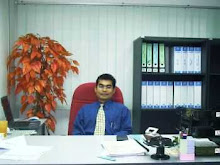Activated Sludge or Suspended Growth treatment system is the most common system to treat waste water. The system uses biological treatment processes in which
microorganisms are maintained in suspension within the liquid. In suspended
growth treatment systems, microorganisms convert the organic matter or other
constituents in the wastewater into gases and cell tissue. The most common type
of aerobic system which utilizes activated sludge (AS) system are EA (Extended Aeration), CAS, OD (Oxydation Ditch) and SBR (Sequential Batch Reactor)
Activated
Sludge (AS) system by definition consists of three basic components that are,
(1) a reactor in which the microorganisms responsible for treatment are kept in
suspension and aerated; (2) liquid-solids separation, usually in a
sedimentation tank; and (3) a recycle system for returning solids removed from
the liquid-solids separation unit back to the reactor. An important feature of
the AS process is the formation of flocculent settleable solids that can be
removed by gravity settling in sedimentation tanks. The Hydraulic retention time in the reactors is a very critical parameter and it can be as low as 8 hrs for CAS (Conventional Activated Sludge) or 6 hrs for hybrid and as high as 24 hrs for an EA system.
